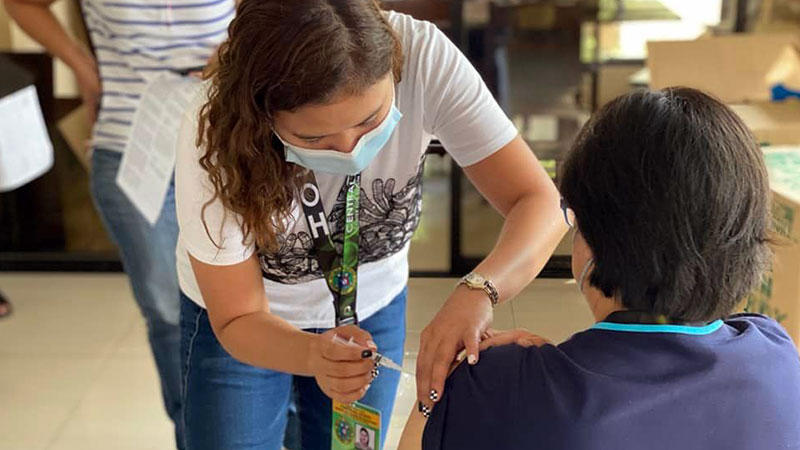
An employee of the Central Luzon Center for Health Development administers a booster shot to a person in a recent vaccination activity in the City of San Fernando, Pampanga. (Photo courtesy of DOH Health Central Luzon)
All 17 regions in the country have yet to reach a booster coverage of at least half the targeted population, prompting the Department of Health (DOH) to rethink its vaccination strategies as Omicron subvariants which are capable of evading immunity continue to cause a rise in infections.
Health Undersecretary Maria Rosario Vergeire said on Friday that booster rates across the regions had been sluggish as none has reached at least 50 percent.Metro Manila has the highest booster coverage at 43 percent.
“The rest of the regions are very low in their booster uptake. That’s why we want to closely monitor these regions that are lagging behind so we can increase the level of vaccination in their area,” Vergeire said in a Laging Handa briefing.
The DOH official noted that booster vaccination had “plateaued” since March, averaging only around 200,000 shots daily.
“If we [maintain] this rate per day, we won’t be able to reach our targets with our set timelines,” she said.
The National Vaccination Operations Center, now led by Vergeire, is retaining the old vaccination targets under the Duterte administration which was set at 70 percent of the total population of 110 million.
No specific timeline
“As for the booster, of course, we want to achieve 70 percent as well. But this would depend on operational constraints,” Vergeire said.
No specific timelines have been set, but she said that a “phased targeting” would be used to allow implementing units to provide some wiggle room to attain their inoculation goals.
Citing latest data, Vergeire said that about 40 million Filipinos eligible for a first booster have yet to be up-to-date on their COVID-19 shots. This was equivalent to only 72.7 percent of the total eligible population nationwide.
Among the strategies being finalized to ramp up booster vaccination, according to Vergeire, are the resumption of national vaccination days, and inoculation campaigns through “outreach and setting-based campaigns.”